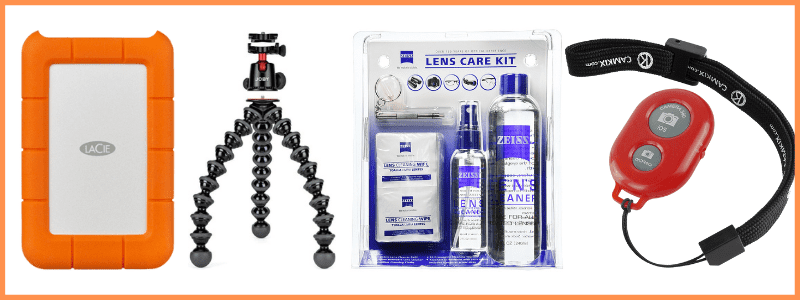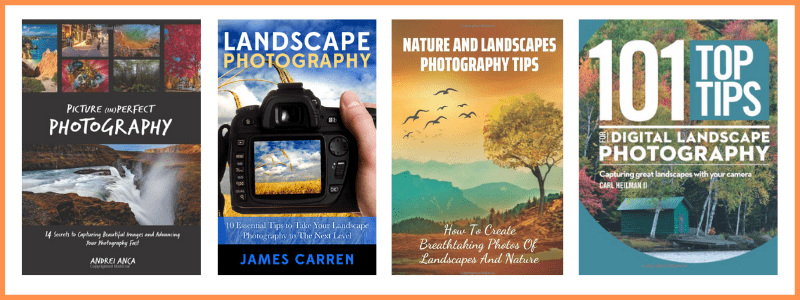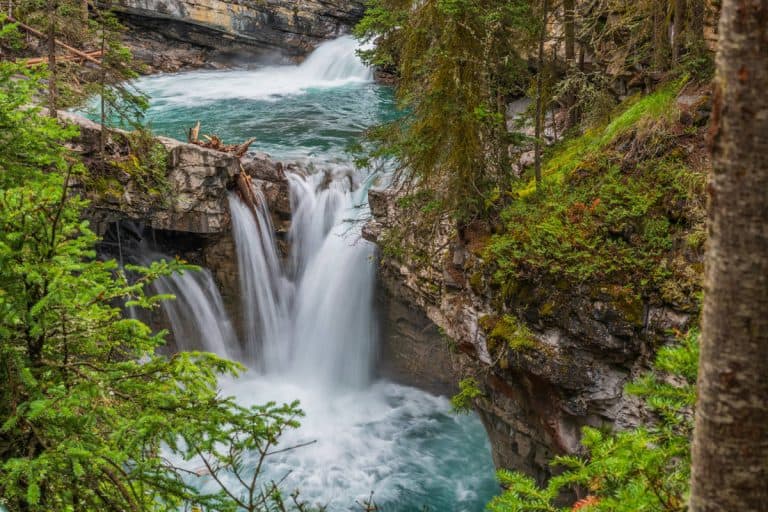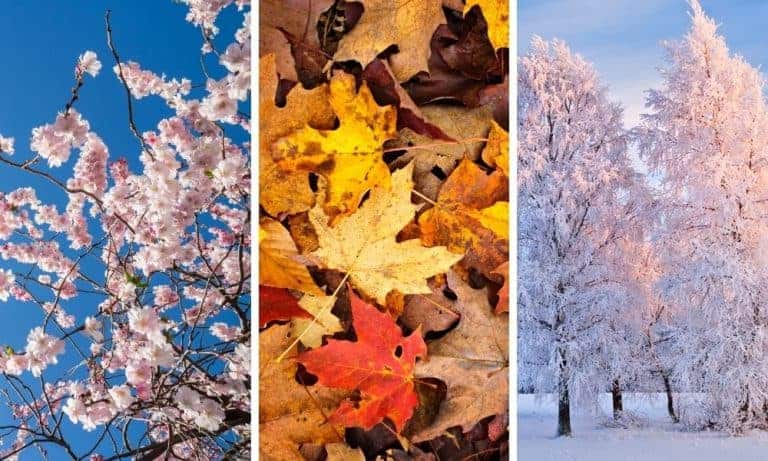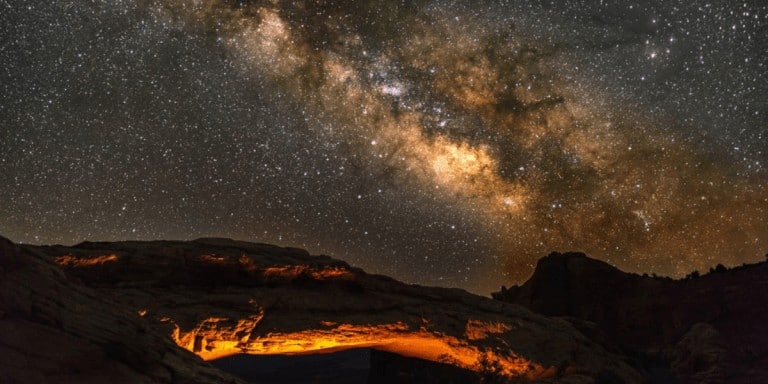Using Blue Hour and Golden Hour Photography to Capture Stunning Images
Have you ever noticed the beautiful colors of a sky at sunrise or sunset? If so, then you’ve experienced something photographers call blue hour and golden hour photography.
These two periods are when natural light is especially magical and perfect for taking stunning pictures. If you are looking for a basic photography technique that will improve your images, simply change the time of day that you head outside with your camera.
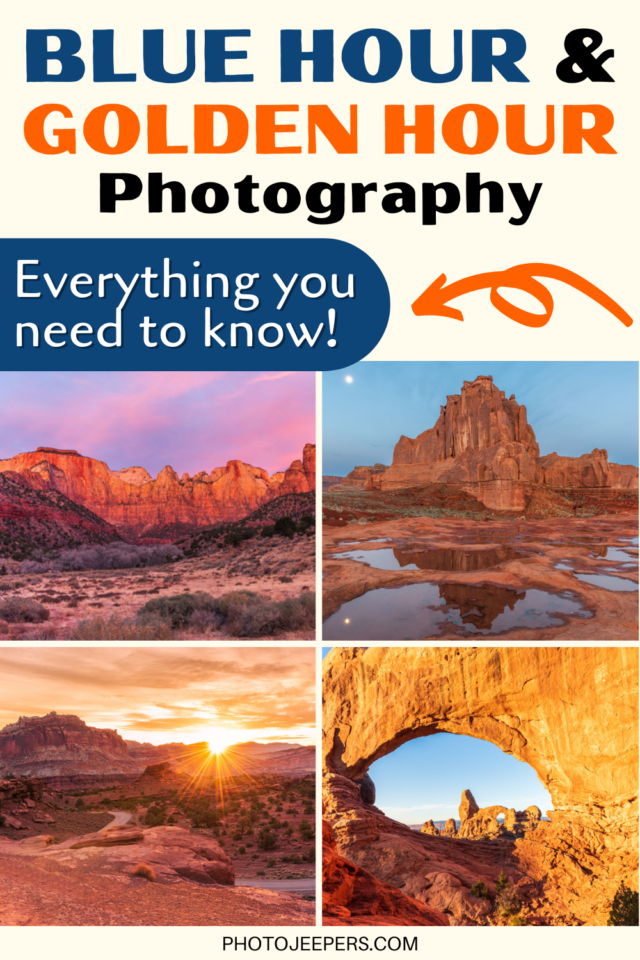
Blue hour and golden hour photography involve capturing the unique beauty of these brief windows in time near sunrise and sunset.
Whether you’re an amateur photographer or a professional, learning how to take advantage of these special moments can create breathtaking photos that will be cherished forever,
This site contains affiliate links which means WE may receive commissions for purchases made through these links. We only provide links to products we actually use and/or wholeheartedly recommend! As an Amazon Associate, we earn from qualifying purchases. Read the full Disclosure Policy.
Camera Gear for Landscape Photography
- Tripod: take a look at these compact and lightweight travel tripods!
- Camera Bag: protect your camera from sand and water → We use Lowepro camera backpacks for outdoor photography.
- Neutral density filter: to compensate for variance of light you’ll need to use a neutral density filter. → Check out the Kase magnetic filters we use!
- Camera cleaning kit: remove dust or water that WILL get on your lens. NOTE: this is not for cleaning the sensor.
- Memory cards: purchase name brand memory cards since you’re trusting your images to the card! → We use Lexar and Sandisk!
- External hard drive: copy photos to a portable external hard drive ‘just in case’.
- Headlamp: use when taking sunrise and sunset photos!
Camera Gear at B&H Photo
Blue Hour and Golden Hour Photo Ideas
Take a look at the blue hour & golden hour photo ideas shared by members of our photography friends to illustrate this concept.
WATCH the video as we discuss various composition and lighting techniques used in each image.
Blue Hour and Golden Hour Photography Tips
Light is the foundation of a good photograph, and while there are complicated techniques we can use to make the most of natural and artificial light, the easiest way to capture a great photo is to take advantage of the right time of day for beautiful photography.
It’s important to understand the concept of blue hour and golden hour as it related to photography.
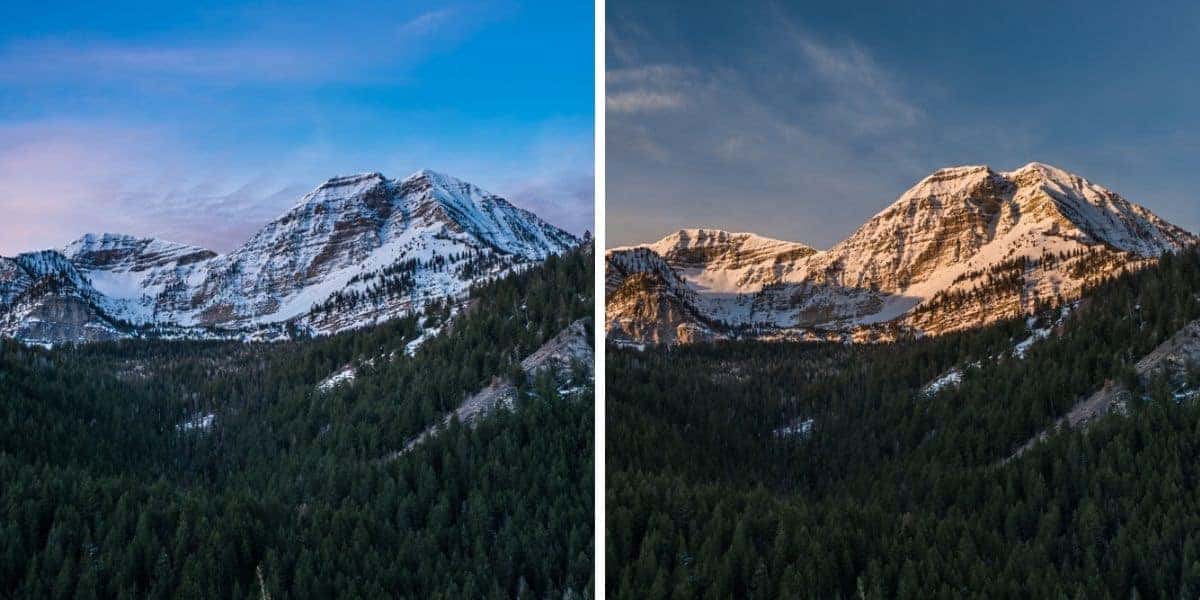
The photography tips below will help you make the most of the blue hour and golden hour light to capture those wow images.
And don’t forget to photograph sunrise and sunset too!
When is Golden Hour?
The golden hour is the period before the sun sets and after the sun rises. It is not exactly an hour, but a time when you can expect soft afternoon or morning light that highlights red and orange hues.
Golden hour light is perfect for all types of photography — landscapes, portraits, wildlife, cityscapes, and macro photography.
The light during the golden hour is so much less intense than mid-day and you will avoid the harsh shadows that are so hard to avoid when the sun is high in the sky.
Golden Hour Light in the Morning
As landscape photographers, we take full advantage of the golden hour whenever we can, and that means getting up early.
The golden hour before and right after sunrise naturally brings out the red, orange and yellow tones in the landscape or reflected in the clouds.
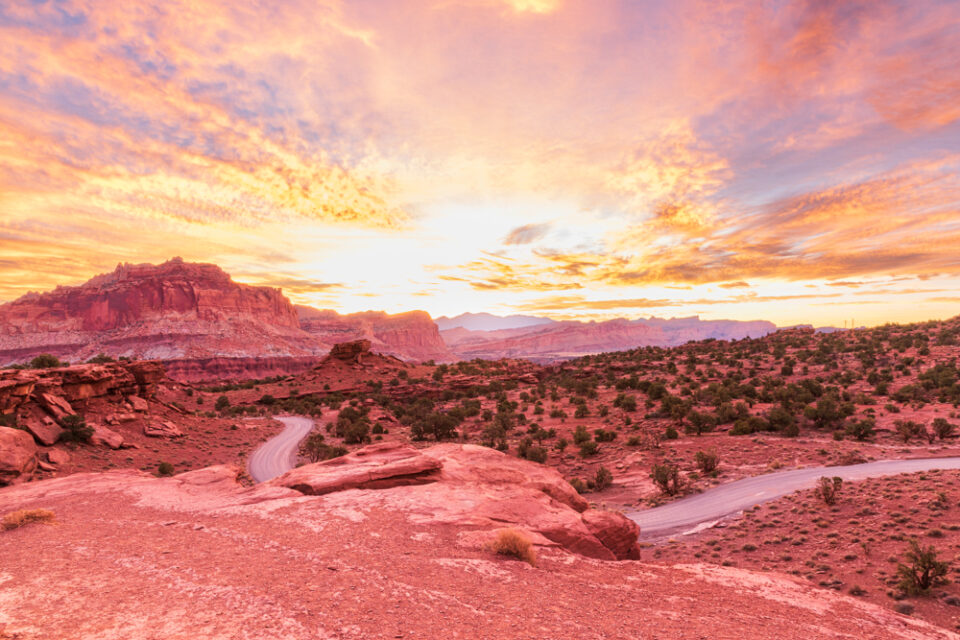
Right before the sun rises, you can capture golden light reflected in the clouds in the sky as seen in the photo above taken at Capitol Reef National Park in Utah.
The golden light right after sunrise is especially noticeable in southern Utah with the red rock landscapes.
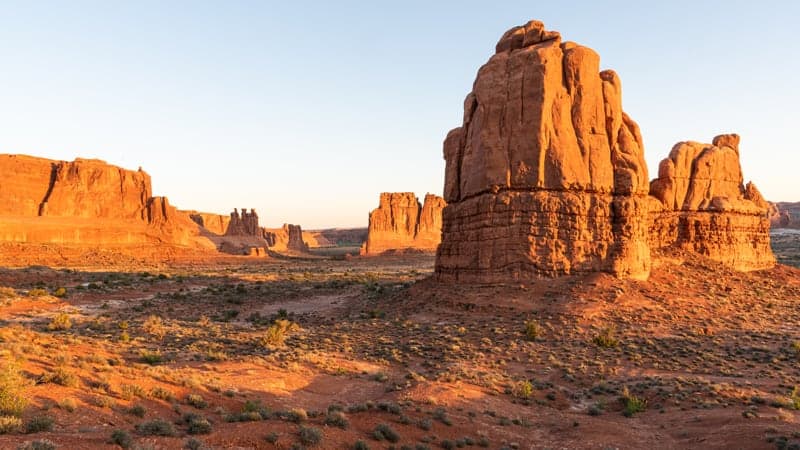
The photo above was taken during the golden hour at Arches National Park. You can see how the orange tones really pop, causing a nice glow on the rocks.
Golden Hour Light in the Evening
You’ll find golden hour light right before the sun actually sets. Again, it will cast a hue of yellow, orange and red on the scene or reflected in the clouds.
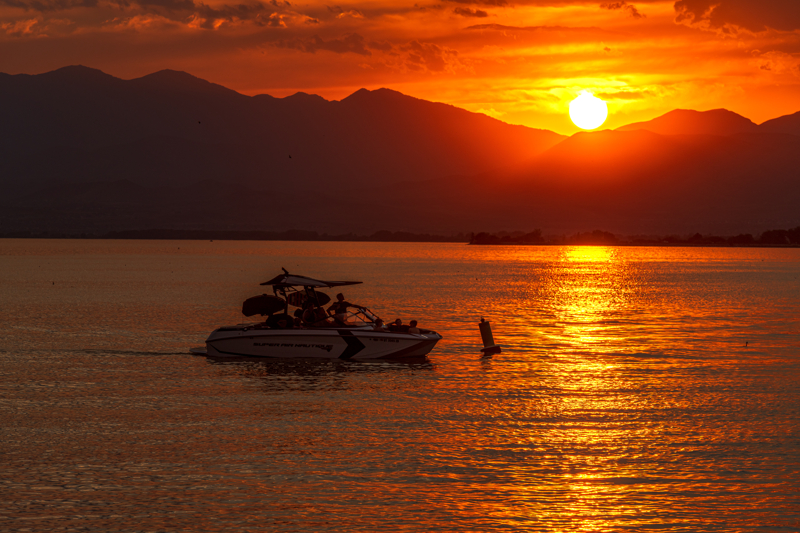
The image above is from Utah Lake State Park as the sun was setting. The golden light is reflected atop the surface of the water and clouds in the sky.
What is Blue Hour in Photography?
Blue hour happens on the other side of golden hour, roughly an hour before sunrise and an hour after sunset. During this time period, the indirect sunlight is dominated by blue wavelengths.
Like the golden hour, the blue hour provides soft, diffused light, and while it may appear too dark to the naked eye, you’d be surprised at how much light your camera will pick up during the blue hour.
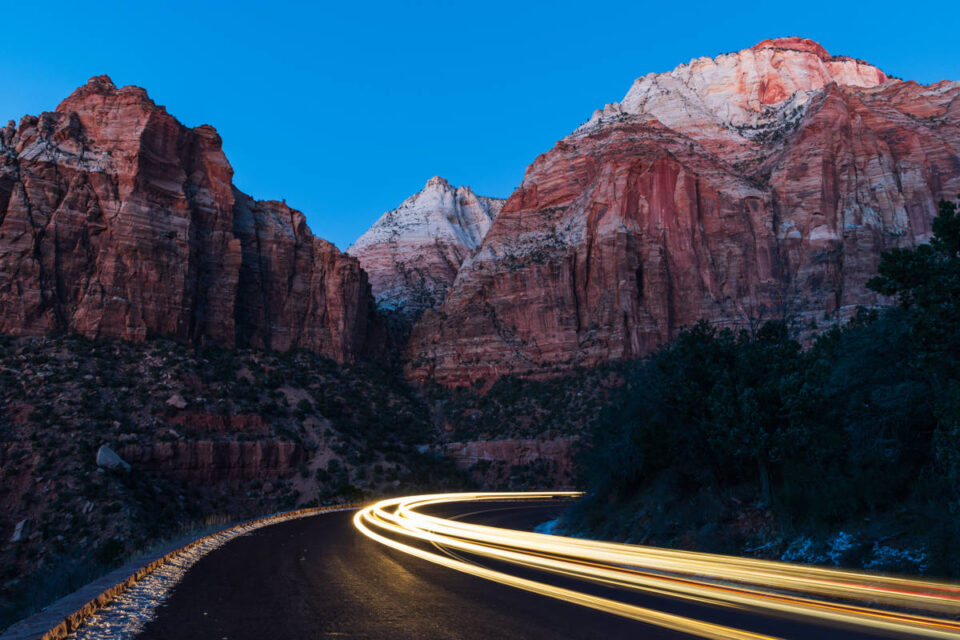
The blue hour is excellent for capturing landscapes, street scenes, structures, scenes with artificial light sources, motion blur, and light trails.
But the low light during blue hour is less ideal for portraits and wildlife photography as it becomes harder to capture crisp lines and detail.
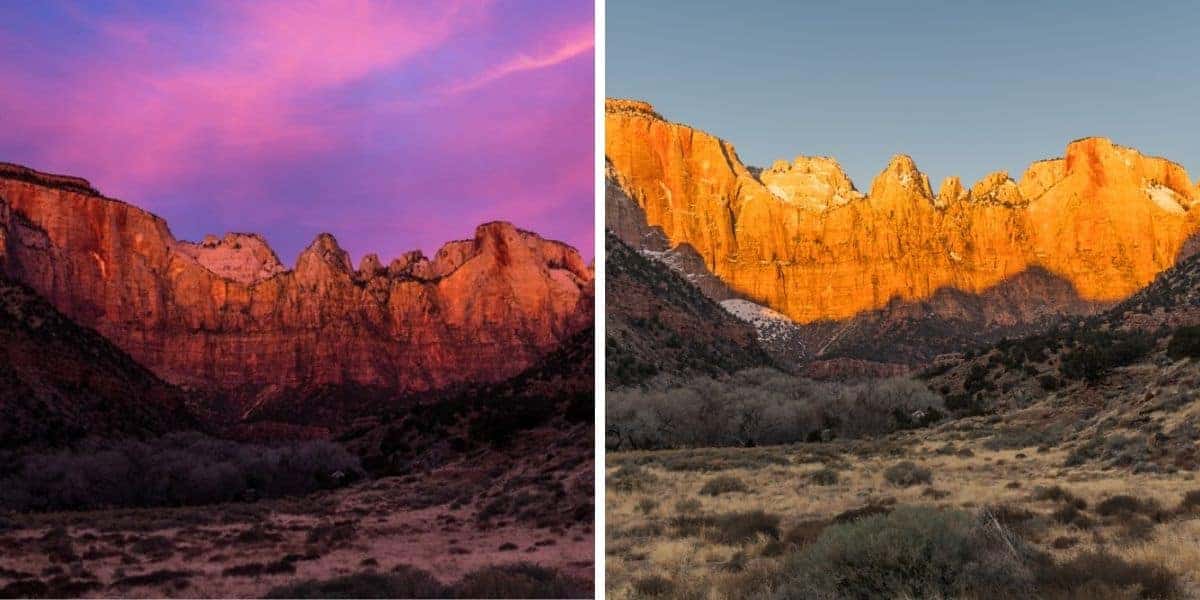
Take a look at the image above capturing sunrise at Zion National Park that showcases blue hour and golden hour. This required us to be at the location about 30 minutes before and 30 minutes after sunrise.
So many people visit a location for the sunrise, but don’t get there in time for blue hour. Or they take their sunset photos and leave before blue hour starts. They are missing amazing opportunities to capture images during the best light for photography!
Bring a headlamp with you when shooting the blue hour or golden hour so that if you’re walking to/from your location in the dark you can do so safely.
Blue Hour Color at Dawn
Remember that your camera picks up more light than your eyes do. Don’t give up on taking photos pre-sunrise or post-sunset — you never know what the sky has in store for you.
The blue, pink and purple tones during blue hour are usually seen as color reflected in the sky and clouds.
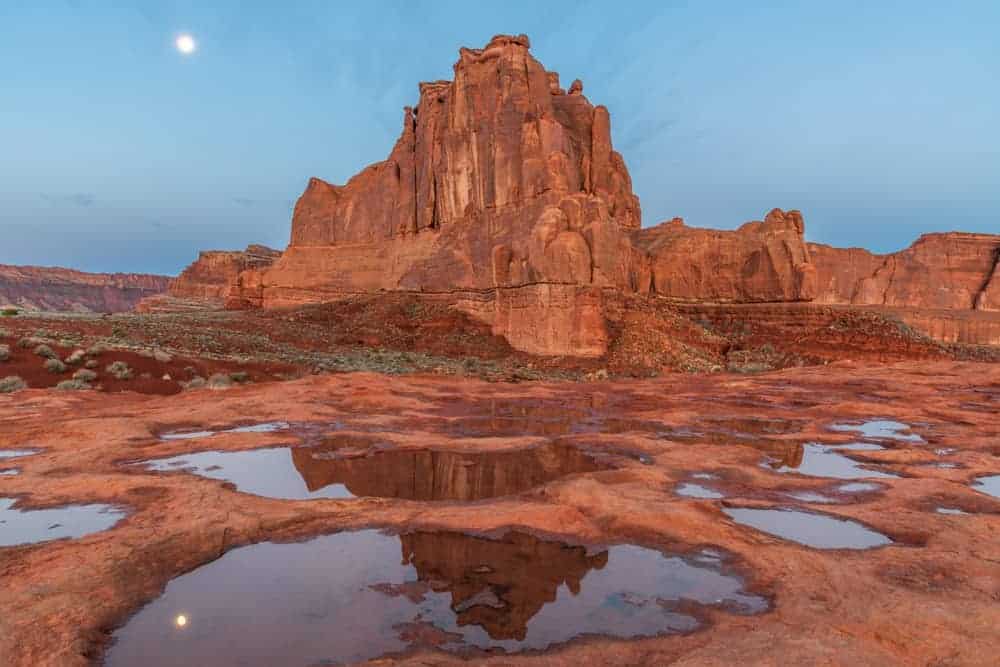
The shot above was taken before sunrise after a good long rain. Because we know Arches National Park so well, this was the first spot we visited to capture the unique puddle reflections before the sun came up.
Here the orange rocks stand out against the deep blue sky, but the tones are decidedly cool, and there isn’t a lot of contrast between light and dark.
The puddles make for interesting reflections in the foreground, and the moon is simply a fuzzy ball in the hazy sky.
Blue Hour Color at Dusk
Many people take their sunset photos then pack up and go home because they think once the sun goes down, it’s too dark to take pictures.
They are missing out on the fabulous scenes to photograph during blue hour. Remember, during this time, your camera will capture detail you can’t see with your eyes.
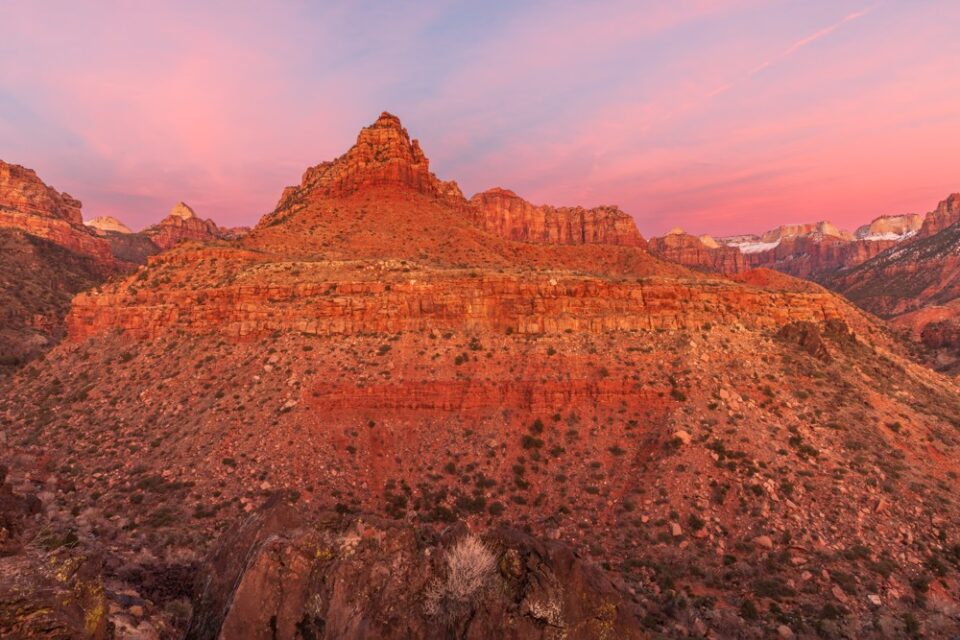
In the photo above from Zion National Park in Utah, we stayed after sunset to see what would happen. The sky and surrounding landscape started to glow with a pink hue.
This unique lighting at dusk provided interesting textures on the red rocks that would have been less apparent at other times of the day.
The duration of the golden hour and blue hour will depend on your location and the time of year, so it’s always wise to give yourself extra time when you’re shooting in unfamiliar locations.
Understanding the way light behaves and using it to your advantage is a great way to improve your photography, whether you’re just starting out or have been taking photos for years.
AMAZON Landscape Photography Books:
Photography Challenges
The number one way to improve your photography is to practice! Photography challenges provide a subject or technique to find and photograph.
The challenge exercise helps boost your creativity and skills! Here are a few photo challenges to help you get out an practice! We also share fun ways to get the kids involved in photography!
- 52 Week Photography Challenge
- Spring Photo Challenge
- Summer Photo Challenge
- Fall Photo Challenge
- Winter Photo Challenge



